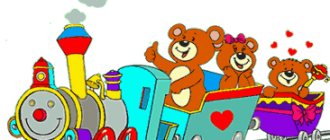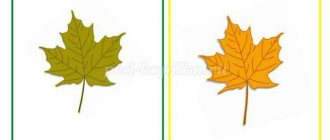- home
- Aircraft
Today there are quite a few different aircraft, but not all of them are called airplanes. This term refers to any aircraft that is designed to fly in the sky due to a power plant that creates thrust and a wing that remains motionless at all times. It is the fixed wing that is the main characteristic of the aircraft, distinguishing it from any other aircraft.
This term itself appeared back in 1857 - then a Russian pilot called a balloon that way; there were no airplanes in the sense in which we use this word today. It was mentioned in a meaning close to its modern one a few years later - in 1863. It was an article “Aeronautics”, published in 1863 in the magazine “Voice”. The author was journalist Arkady Evald.
Today there are a huge number of aircraft classifications. For example, by the number of wings, by the aerodynamic system, by the type of chassis and by speed.
In this text we will look at one of the main typologies. Any aircraft, first of all, are divided by purpose. They are civilian, military and experimental. Each of these categories, in turn, is also divided into several types.
Civil
As is obvious from the name itself, these are aircraft designed to transport passengers or cargo. The first flight on an aircraft of this type took place in Russia more than a hundred years ago - in 1914. The flight was made from St. Petersburg to Kyiv, and the plane was called “Ilya Muromets”. There were 16 passengers on board.
Today, the most famous and frequently used airliner of our time is the American Douglas DC-3 model. He first flew with passengers back in 1935. Over the past time, the aircraft has been improved, and many other models, including those of Soviet aviation, were created on its basis.
Civil aircraft can be transport, training or special purpose. Transport vehicles, in turn, are divided into according to their purpose:
- Freight - for transporting goods;
- Passenger planes are the planes we fly;
There are many varieties of such vehicles. The easiest way is to divide them simply by manufacturer. In fact, the vast majority of the world's aircraft are produced by such companies:
Boeing
This is an American company that appeared a long time ago, in 1916. Since then, it has been producing aircraft for civil aviation. The most popular model is the Boeing 737. It is this aircraft, produced in 1968, that is used most often today. The name “Boeing” itself has already become practically synonymous with the word airplane.
Airbus
This company today is the main competitor of the Boeing described above, although it was founded much later - in 1970. This European company, today its main office is located in France. Some models of this manufacturer are economical, which makes them a serious competitor to Boeing.
Military
Military aircraft are designed to conduct combat operations, that is, protection from the enemy or, conversely, attack. They are divided into several types, but in general, they can perform a variety of tasks, depending on the current situation.
Bombers
This subspecies of military aircraft essentially has one task - to destroy any ground objects from the air. This occurs by dropping bombs or missiles on the target. Today there are many different models, among the most commonly used are the Su-24 and Su-34.
It was the bomber that was converted into the first passenger aircraft, the Ilya Muromets, which was discussed above. During the First World War, the aircraft was re-equipped and subsequently it always served as a bomber.
Fighters
Unlike bombers, such aircraft are used for air combat. The name “fighter” sounds loud and menacing, but in fact such aircraft belong to defense equipment. They are almost never used for offensive purposes. Fighters were actively used by both sides during the Second World War - the most famous models are the MiG-3 and Yak-1.
It is interesting that in the very first models of fighters, it was not a machine gun, as it is today, but a revolver, so the rate of fire was much lower.
Fighter-bombers
Naturally, the two models described above were combined to obtain a universal model that combines the functions of both types. The main advantage of this variety is the ability to bomb any ground targets without any cover at all. Such aircraft are very light, maneuverable and equipped with powerful weapons. The most successful models are Mig-27, Su-17, SEPECAT Jaguar.
Interceptors
In fact, this is not a completely separate class, just a subtype of fighter. The main difference is that interceptors are designed to destroy a specific target, namely enemy bombers. They are also slightly different in structure - such models are additionally equipped with radar equipment. famous models - Su-15, Su-9 and others.
Notes on the lexical topic “Transport” for children 4-5 years old with severe speech impairments
A series of notes on the lexical topic "Transport" for children 4-5 years old with severe speech impairments
Description of work: this work contains 3 notes on direct educational activities on the lexical topic "Transport" for children 4-5 years old with severe speech impairments . The material is built on the principle of “from simple to complex” and corresponds to the objectives of “Speech therapy work to overcome ODD in children.” Didactic games and exercises offered in the notes contribute to the development of:
- phonemic awareness; — mental processes; - vocabulary and grammatical structure of speech; - connected speech.
Summary of lesson No. 1 on the topic “Transport”
Goal: to expand children’s understanding of transport. Objectives: 1. Continue teaching children to form nouns with diminutive suffixes. 2. Develop children’s ability to name a group of homogeneous objects with a generalizing word. 3. Strengthen children’s ability to answer questions in complete sentences. 4. Develop attention, memory, thinking, fine motor skills. Equipment: demonstration material: plot picture “Transport”; subject pictures depicting a car, truck, bus, plane, ship, train; pictures for the game “Big-Small”. handout: handout for the game “Trace the Truck and Color It.” Progress of the lesson I.Org.moment. 1.D/i “Choose an action.” II.Work on the topic of the lesson. 1. Conversation on the topic. The speech therapist shows the children the plot picture “Transport”. -Guys, look carefully at the picture and tell me what kind of transport you see in it? 2.D/i “Name the transport.” The speech therapist puts object pictures depicting transport on a typesetting canvas, and the children name them. 3.D/i “Name it in one word.” — Tell me, guys, what is transport needed for? (To transport people, goods.) - What can you call people who travel in transport? (Passengers.) 4.D/i “Parts of the machine.” The teacher shows the children a picture of a car and asks the children what parts it has. (The car has a cabin, body, wheels.) III. Physical education minute. “Truck” The truck is carrying sand. They walk in a circle, pretending to turn the steering wheel. The people are surprised: They stop, turn their faces in a circle, spread their arms, and make surprised faces. “This is such a miracle, miracles, There is sand in it under the sky.” Tilt your head right and left twice. They stretch on their toes, raising their arms up. IV.Continuation of work on the topic of the lesson. 1.D/i “Big-small”. 2.Work with the handout “Trace the truck by dots and color it.” V. Result.
Summary of lesson No. 2 on the topic “Transport”
Goal: to continue to expand children’s understanding of transport. Objectives: 1. Continue teaching children to write a short descriptive story using support cards. 2. Exercise children in understanding and using the prepositions “To”, “PO”, “FROM”, “ABOUT”, “ON”, “B”. 3. Strengthen children’s ability to guess an object based on essential features. 4.Develop attention, memory, thinking, fine motor skills. Equipment: demonstration material: subject pictures depicting transport; picture with the image of Dunno; pictures for the game “Where? Where? Where?"; support cards; pictures for the game "4 extra". Progress of the lesson I.Org.moment. D/i “Flies or doesn’t fly”: ship, bee, plane, sofa, rocket, truck, helicopter, car, bus, bullfinch. II.Work on the topic of the lesson. 1. D/i “Guess by the description.” The teacher tells the children that Dunno has come to visit and wants to play with them. — It's a big blue car. It has two wings and a tail. He's flying across the sky. (Airplane.) - This machine is needed to transport cargo. It has a cab, a body and wheels. (Truck.) - This vehicle is large and it has sails. It floats on water and transports people and cargo. (Ship.) - This transport travels on rails. He has a lot of carriages. He puffs: “Chuh-chukh-chukh.” (Train.) - We always use this transport to go to kindergarten and to work. (Bus, car.) 2. D/i “Name the transport.” 3. D/i “Name it in one word.” 4. Understanding and use of the prepositions “K”, “PO”, “FROM”, “ABOUT”, “ON”, “B”. D/i “Where? Where? Where?" The teacher shows the children pictures and asks questions: - Where does the bus (truck, train) go? (The bus is traveling on the road. The train is traveling on the rails. Etc.) - Where did the bus (truck, train) arrive? (The bus pulled up to the stop. The truck pulled up to the garage. The train pulled up to the station. Etc.) - Where did the bus stop? — Where did the bus (truck, train) leave from? (The bus pulled away from the stop. The truck pulled away from the garage. The train pulled out of the station.) - Where is the ship sailing? (The ship is sailing on the sea.) - Where did the ship sail to? (The ship sailed to the shore.) - Where did the ship sail from? (The ship sailed from the shore.) - Where is the plane flying? (The plane flies in the sky.) - Where did the plane take off from? (The plane took off from the ground.) - Where did the plane land? (The plane landed on the ground.) III. Physical education minute. IV.Continuation of work on the topic of the lesson. 1. Compilation of a short descriptive story on the topic. The teacher shows the children support cards and gives a sample story: - This is a truck.
A truck is a transport. Its body is red and its cabin is green. He is big. He transports goods. Then 2-3 children make up a story about their favorite transport using an analogy.
2.D/i “4 extra”. V. Result.
Summary of lesson No. 3 on the topic “Transport”
Goal: to consolidate children’s knowledge about transport. Objectives: 1. Continue to teach children to understand the content of the story and answer questions about the text. 2.Develop children’s ability to solve riddles. 3. Clarify, activate and develop vocabulary on the topic. 4.Develop attention, memory, thinking, fine motor skills. Equipment: demonstration material: picture of Dunno; subject pictures depicting transport; pictures from the story “Special machines”. handout: copybook. Progress of the lesson I.Org.moment. D/i “The one who tells me the transport will sit.” II.Work on the topic of the lesson. 1. Riddles of Dunno. The brothers got ready for a visit, clung to each other and rushed off on a long journey, only leaving a smoke behind. (Train.) It doesn’t flap its wings, but flies, Not a bird, but overtakes everyone. (Airplane.) A steam locomotive without wheels, That's a miracle locomotive. Has he gone crazy - walked straight across the sea? (Ship.) It doesn’t fly, it doesn’t buzz, the beetle is running down the street. And they burn in the beetle’s eyes - Two brilliant lights. (Car.) 2.D/i “Name the transport.” 3.D/i “Name it in one word.” 4. A speech therapist’s story about special-purpose machines. The speech therapist tells children about special-purpose machines, showing corresponding pictures. -One day, dad and Masha were walking down the street. Suddenly they heard the sound of a siren, and soon a car with a red cross appeared. All the cars immediately gave way to the loud car. “Dad, why is everyone letting this car through?” asked Masha. - Because it is a special machine. Such machines help a person in his work. There are snowplows, sprinklers, police cars. Sometimes, saving someone's life may require immediate help. Then a special ambulance is called. It has modern medical equipment. Doctors provide first aid to a person and, if necessary, can quickly take a seriously ill patient to the hospital. There are also fire trucks. They rush to respond to fire calls. A brigade of firefighters rescues people and, using special equipment, extinguishes the fire with foam and water. Special machines are always in a hurry to help someone. That's why everyone lets them through, Masha! III. Physical education minute. IV.Continuation of work on the topic of the lesson. 1. Conversation on the story “Special Purpose Vehicles.” — What cars did Papa tell Masha about? Tell me guys, what is an ambulance/fire truck for? What other special machines do you know? Why do people need special cars? 2. Working with copybooks. V. Result.
We recommend watching:
Summary of a lesson on speech development in the middle group on the topic: “Ukraine is my native land” Experience of a speech therapist teacher in a preschool educational institution Automation of whistling and hissing sounds in children in pictures The work of a speech therapist with parents in a preschool educational institution in accordance with the Federal State Educational Standard. Correction of speech disorders
Similar articles:
Summary of a lesson on speech development in the middle group on the topic “Our Street”






